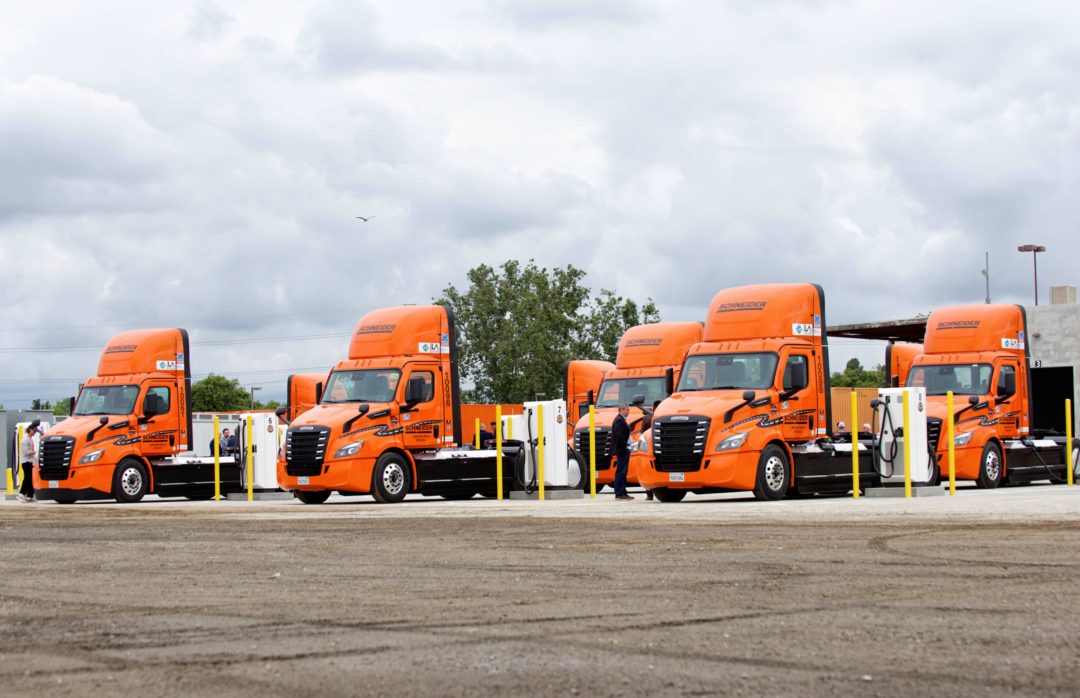Schneider deploys 50 battery-electric trucks in Southern California
Transportation provider deploys Freightliner eCascadia models for regional haul routes under 200 miles

Transportation and logistics provider Schneider National has deployed 50 battery-electric Freightliner eCascadia trucks through a project with the Joint Electric Truck Scaling Initiative (JETSI), making the company one of the largest zero-emission Class 8 fleet operators in the nation.
Green Bay, Wisconsin-based Schneider will operate the 50 trucks through its Southern California intermodal operations center in South El Monte, California. They will be used primarily in regional haul routes around the Los Angeles and Inland Empire region on trips under 200 miles. Schneider’s Freightliner eCascadia drivers can complete six to eight trips per day before recharging the trucks at its depot. Schneider began scaling its battery-electric Class 8 fleet in early 2023 and in November became the first major carrier to announce that it had hauled 1 million zero-emission miles of customer freight with that fleet.
Schneider constructed the charging station at its South El Monte facility with funding from JETSI, building a 4,900-square-foot charging site that features 16 350 kW dual-corded dispensers that allow up to 32 battery-electric trucks to charge simultaneously.
The JETSI project is an initiative that will ultimately deploy 100 Class 8 battery-electric trucks across Southern California. It is part of California Climate Investments, a statewide initiative that puts billions of Cap-and-Trade dollars to work reducing greenhouse gas emissions, strengthening the economy, and improving public health and the environment.
Related Articles
Copyright ©2024. All Rights ReservedDesign, CMS, Hosting & Web Development :: ePublishing